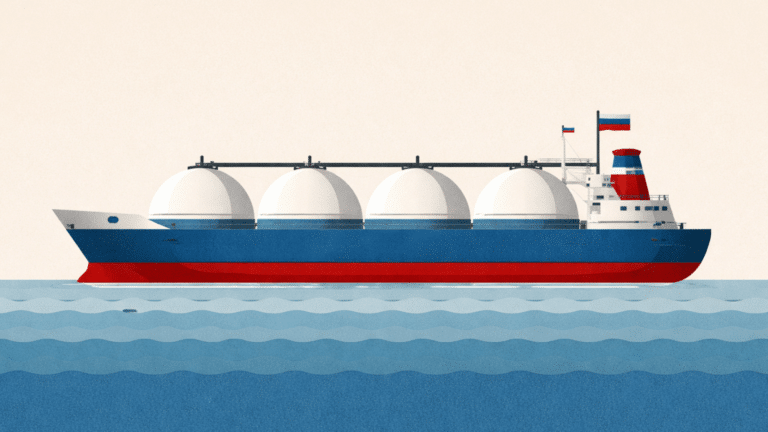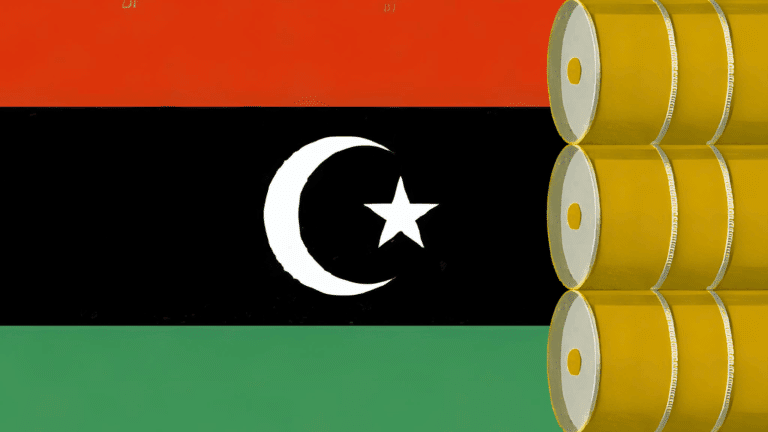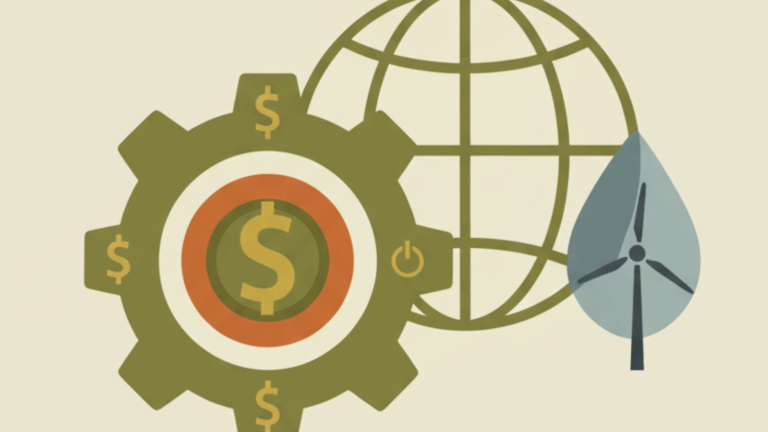A price cap on Russian crude oil in response to the country’s invasion and ongoing war in Ukraine will go into effect on December 5. The price cap is an effort to reduce Russia’s oil revenues while maintaining adequate supplies of crude on the global energy market.
In this second installment of a two-part Q&A on the price cap,[1] Edward Fishman, a senior research scholar at the Center on Global Energy Policy, answers questions about how one can evaluate whether the policy is successful and what alternatives exist if it fails.
What would success for the price cap look like?
For the policy to be judged a success, it will need to significantly cut Russia’s oil revenues. Since the beginning of the war in Ukraine, Russia has been selling its oil at big discounts—around $20 or $30 below the Brent benchmark price.[2] At the very least, the price cap should lock in these discounts. The G7 will set the cap at a fixed price as opposed to a moving discount to Brent, but it reserves the right to alter its level at any time.
Ideally, the price cap should require Russia to sell its oil with even steeper discounts than already exist on the marketplace. The United States has said that it plans to keep the price cap above Russia’s marginal cost of production, which the Russian government assesses at roughly $40 per barrel.[3] (Independent analysts believe Russia’s marginal cost of production may be much lower.[4]) The closer the cap pushes the price of Russian oil to $40 per barrel or even below that threshold, the more successful it will be, as it will signal that Putin is generating minimal profits from oil sales.
At the same time, to be judged a success, the price cap must not inadvertently cause a spike in global oil prices. How might that happen? With US sanctions, overcompliance is the norm. Instead of abiding by American sanctions regulations precisely, companies often stay well clear of the line. In the case of the price cap, overcompliance would look like traders, insurers, or shipping firms refusing to deal with Russian oil even if it’s sold for a price below the cap. The result could be a major drop in the supply of Russian oil available on the global market, which could increase prices for everyone. (Of course, if the supply of Russian oil is squeezed but global energy prices do not increase, that would not be a problem from the perspective of the G7.) Fears of overcompliance explain why senior US officials have made compliance expectations relatively simple[5] and have repeatedly downplayed the threat of American penalties when companies accidentally violate the policy.
What would failure look like?
There are many ways the price cap could fail. For starters, if the price cap does not meaningfully reduce Russia’s oil revenues, it would be fair to question why the United States and other members of the G7 invested so much time and effort into the policy. While it may be tempting to keep the cap conservative—for instance, by maintaining it roughly in line with the current market price for Russian oil—doing so would defeat the purpose of the policy.
Another way the cap could fail would be for buyers of Russian oil, including firms in China and India, to find full-scale supply chains for Russian oil that don’t involve the G7 service providers that must adhere to the price cap. If Russia can sell all its oil without using any G7 services (including trading, commodities brokering, financing, shipping, insurance, flagging, and customs brokering), the cap will not exert any substantial pressure on Russia’s oil revenues. US officials have emphasized that Russia is free to sell oil without using any G7 services, but its doing so wouldn’t represent policy success. On the contrary, it would demonstrate that a “service providers’ cartel,” as the G7 effort might be considered (see Part 1 of the Q&A), was ill-founded in the first place.
A third way the cap could fail would be widespread evasion and undercompliance. If buyers of Russian oil find it simple to continue to use G7 services while surreptitiously paying Russia prices that exceed the cap, the policy will not just fail to cut Russia’s revenues, it will also damage the reputation of US sanctions. This is what happened in the 1990s when the UN set up the “oil-for-food” program with Iraq, which was riddled with corruption.[6] The Biden administration seems to fear overcompliance more than undercompliance. But if this expectation proves incorrect, Washington must be prepared to vigorously enforce the cap with penalties.
Could Putin respond by just cutting off oil sales?
Yes, Putin himself could remove oil supplies from the global marketplace by shutting in large quantities of Russian oil. Putin is clearly not opposed to using energy as a weapon: he has cut gas supplies to the EU in recent months, a policy that has put pressure on both Europe and Russia.[7] With oil, however, Russia’s biggest customers are not in Europe but rather in China, India, and Turkey.[8] So if Putin decided to shut in oil production, it would not only grievously harm Russia’s own energy sector and its state finances, it would also inflict pain on Beijing, New Delhi, and Ankara—governments that Moscow cannot afford to anger.
Anyone who attempts to forecast Kremlin policy must have a healthy degree of humility. To be sure, Putin could decide to cut oil supplies despite these obvious downsides. Yet it’s not clear such a decision would mark policy failure. In fact, it could even be a welcome scenario for the G7 if it proves fiscally devastating for Moscow and the hardship caused by supply cuts turns the rest of the world decisively against Russia and its aggression in Ukraine.
If the current policy fails, are there ways the G7 could restructure the price cap or pursue a different approach to cut Russia’s oil revenues?
This initial price cap is just one arrow the G7 has in its quiver when it comes to depriving the Kremlin of its oil riches. If the problem with the price cap is either undercompliance or the establishment of reliable supply chains that avoid the G7 entirely, the G7 can strengthen the policy by threatening secondary sanctions against any company that buys Russian oil for a price above the cap. Legislation introduced by Senators Chris Van Hollen (D-MD) and Pat Toomey (R-PA) would do just that.[9]
There are other policy options that don’t rely on the price cap concept at all. For instance, if oil demand falls and pressure on supply eases, the G7 could attempt to cut the volume of oil that Russia sells as opposed to reducing the price of that oil. The United States has successfully imposed such restrictions on Iran for years. Starting in 2012, Washington threatened secondary sanctions against buyers of Iranian oil unless their home countries significantly reduced their total purchases of Iran’s oil every six months. This policy led to sharp declines in Iran’s oil sales—from roughly 2.5 million barrels per day when the policy was instituted to well below 1 million barrels of oil per day at their low point.[10]
Another option is to use financial sanctions to block Russia from enjoying unfettered access to its oil revenues. Such a policy also has a precedent in the Iran context. Later in 2012, Capitol Hill pushed for the Obama administration to require all importers of Iranian oil—including companies in China, India, and Turkey—to reduce their purchases to zero or face secondary sanctions. The Obama administration was wary of such a move, so a compromise was reached: Instead of pushing for purchases of Iranian oil to fall to zero, it would require all of Iran’s oil revenues to flow into restricted accounts, where the funds could only be used for bilateral trade in nonsanctioned goods as well as humanitarian-related products.[11] The policy was a huge success, locking up more than $100 billion of Iranian oil funds in restricted bank accounts.[12] This provided Washington with its best source of leverage in nuclear talks with Tehran. There’s no good reason the G7 couldn’t dust off this policy and direct it at Russia.
A fourth option would be an import tariff on Russian oil—a policy that several influential policy analysts in Europe favored over the price cap.[13] Regardless of what the best alternative to the price cap may be, the important point here is that there are plenty of alternative policies that could cut Russia’s oil revenues. So if the price cap fails, members of the G7 need not throw up their hands in defeat. They can—and should—go back to the drawing board.
Notes
[12] Jackie Northam, “Lifting Sanctions Will Release $100 Billion to Iran. Then What?” NPR.org, July 16, 2015, https://www.npr.org/sections/parallels/2015/07/16/423562391/lifting-sanctions-will-release-100-billion-to-iran-then-what.
[13] Georg Zachmann, Ben McWilliams, and David Kleimann, “How a European Union tariff on Russian oil can be designed,” Bruegel blog post, April 29, 2022, https://www.bruegel.org/blog-post/how-european-union-tariff-russian-oil-….





